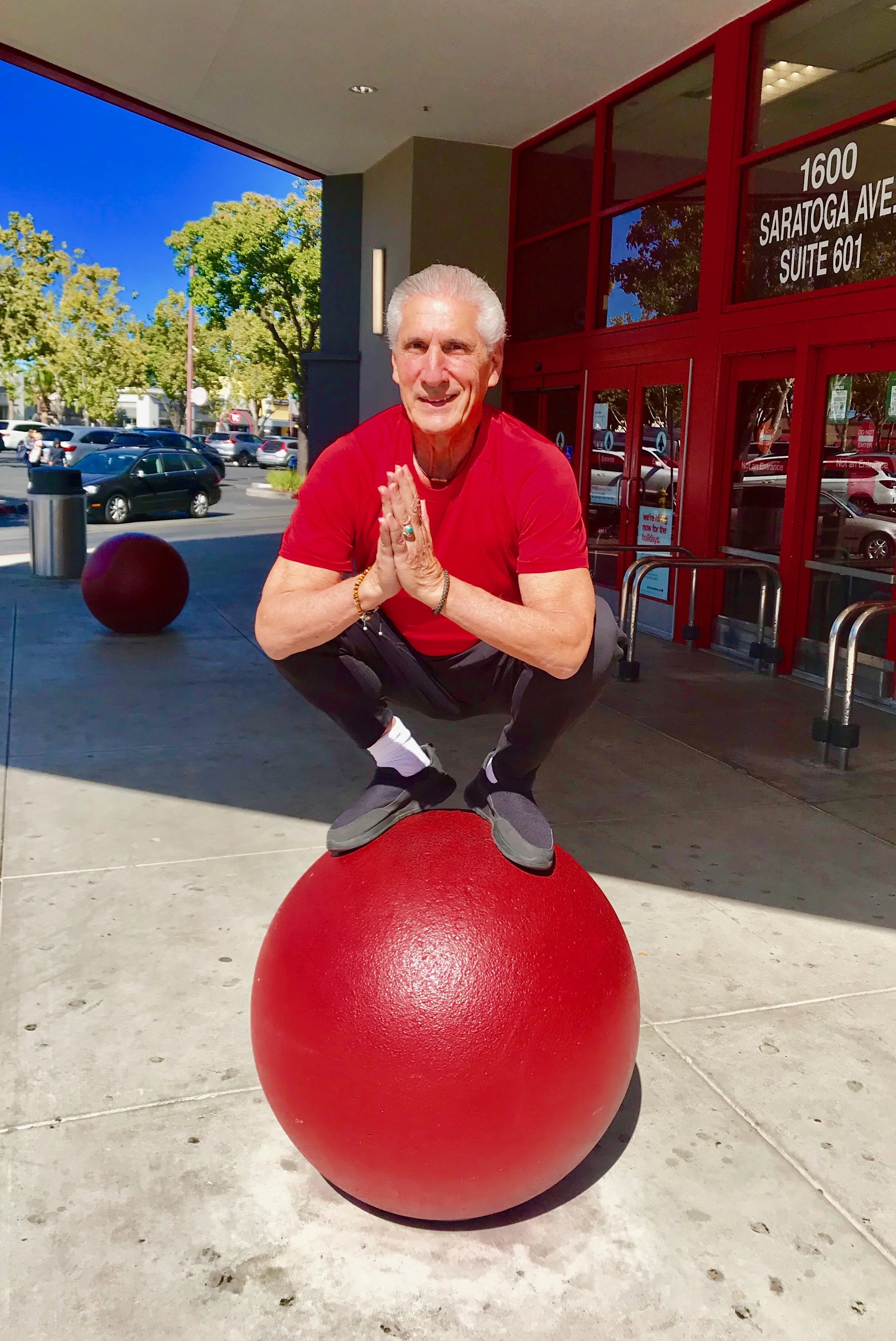“It’s not about being good at something. It’s about being good to yourself.”
Some people like to say, “I don’t give a squat,” meaning they could care less. But I do give a squat—a yoga version squat that is—called Malasana as seen in the photo my wife Cecile took of me on the cement red globe-shaped ball in front of Target. In Sanskrit Mala means “Garland," and “Asana" means “Posture" or "Pose.” Garland refers to the arms hanging around the neck like a necklace. In the classical Indian tradition, garlands of flowers play a significant role in Hindu culture and festivals.
Reason to do the pose: According to many studies, sitting for long periods of time (as we almost all do) has disastrous effects on our cellular, skeletal and metabolic health. Squat Pose stretches the hips, groins, hamstrings, quadriceps, and low back, and promotes health in the pelvis and hip joints. It also strengthens the ankles, tones the abdominal muscles or core, stimulates the digestive tract organs and improves metabolism. A private lesson with a yoga teacher is a good idea if you have never done yoga, and/or have ankle or knee issues.
The squat pose is a very grounding pose that improves balance and calms the mind, body, and spirit. Intentional focus on gratitude and being fully present makes life more joyful. It is a great mood moderator.
It is hard to believe that squatting would qualify as a lost art. Squatting originated in India and Southeast Asia. Of course, humans began squatting long before the invention of chairs and sofas. If you’ve been to India, you will find people squatting in the streets as they go about their day cooking street food, waiting for buses and reading newspapers. Squat pose sure comes in handy for those who travel the east and encounter squat toilets in public restrooms. Toddlers and young children take to the pose very naturally as they rest and play.
How to do the pose:
1-Begin by standing with the feet separated hip-distance apart with toes pointed slightly out and heels in slightly.
2-To avoid injury to your knees, bend your knees, and slowly come down to a squatting position, sink your hips past your knees
3-Keep your knees pointed in the same direction as your toes to protect your joints.
4-If your heels can’t reach the ground, place a folded blanket under your heels for support.
5-Lean your chest forward and fit your torso between your thighs.
6-Fold your palms together into a prayer pose at the heart center, press your outer arms against your inner thighs to separate the legs and lengthen the spine.
7-Remain in this posture for 5 full breaths.
8-To come out of the posture, straighten the legs on an inhale and come up to a standing forward fold.
9-Breathe full, deep breaths.
At first, the pose may seem difficult but with regular practice at home, it will feel like second nature.
